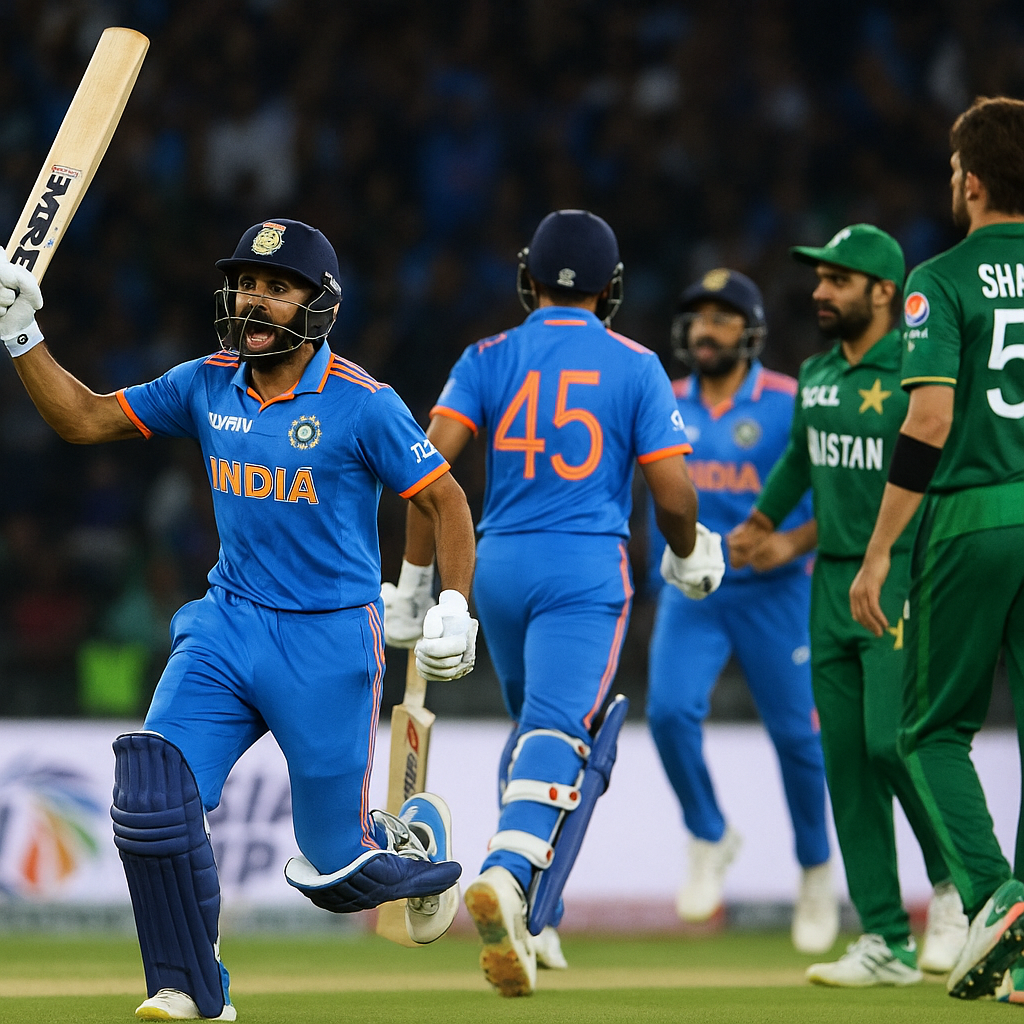India Outclasses Pakistan in Asia Cup 2025: Heartbreak, Controversy, and Lessons Unlearned
The story of Pakistan vs. India in cricket is one of the fiercest rivalries in sports—an epic saga spanning decades, emotions, and unforgettable memories. But in the Asia Cup 2025 Super Four clash, that story took another painful turn. India stormed to a six-wicket victory, leaving Pakistan’s players crestfallen and millions of fans across the world heartbroken yet again.
India’s Start: Dominance from Ball One
Pakistan’s captain won the toss and opted to bowl, hoping to exploit the conditions with pace and swing. Instead, what followed was a masterclass in control and aggression from India’s opening pair.
- Abhishek Sharma was unstoppable, smashing a scintillating 74 off 51 balls that ripped apart Pakistan’s bowling plans.
- Shubman Gill anchored steadily with 47, rotating the strike and punishing loose deliveries.
Pakistan’s frontline pacers, Shaheen Shah Afridi and Haris Rauf, looked ordinary. Their lengths wavered, their pace predictable, and their impact absent. Abrar Ahmed’s spin briefly slowed things down, but by the 10th over, India had already crossed 80, laying a platform that would haunt Pakistan later.
Pakistan’s Response: Hope and Heartbreak
Walking out to chase, Pakistan fans clung to hope. The target wasn’t impossible, but it demanded discipline and big partnerships.
- Fakhar Zaman and Sahibzada Farhan gave Pakistan a watchable start. But then came the moment. Fakhar fell to a controversial third-umpire decision that many fans branded “dubious.” Twitter erupted with accusations of bias, memes, and calls for DRS reforms. That dismissal, more than just a wicket, was a mental blow.
- Farhan, however, stood tall. His fearless knock of 58 off 45 balls, capped with a gun-firing celebration after reaching his fifty, was one of the only bright spots of the night. He looked ready to rewrite the script—until India’s bowlers tightened the screws.
The middle order collapsed under pressure. Rizwan struggled for timing, Iftikhar Ahmed couldn’t accelerate, and Babar Azam failed to convert. Boundaries dried up, dot balls mounted, and Pakistan’s run rate fell into a quicksand they couldn’t escape.
Turning Points That Changed the Game
- Fakhar’s dismissal – More than just one wicket, it broke the rhythm Pakistan was building.
- Middle overs stagnation – Between overs 8–14, Pakistan managed only 28 runs, gifting India control.
- Abhishek’s dominance – His 74 was more than runs; it was psychological warfare.
- Dropped chances – Pakistan’s fielding errors allowed India to keep momentum, a mistake no team can afford in high-stakes clashes.
Fans React: Anger, Pain, and Memes
No Pakistan vs. India clash is complete without the emotional storm that follows.
- On social media, heartbroken fans vented:
- “Same story, different year. No fight, no plan.”
- “Fakhar’s wicket was daylight robbery.”
- “This team collapses under pressure—always.”
- Memes flooded timelines, some mocking Pakistan’s inconsistency, others capturing the raw sadness of yet another India loss.
In living rooms, cafes, and cricket screenings across Pakistan, the silence at the final wicket was deafening.
India’s Composure, Pakistan’s Lack Thereof
India’s victory wasn’t just about runs—it was about mental strength. They absorbed pressure, played smart cricket, and never let go once they had the upper hand. Pakistan, in contrast, let panic dictate strategy.
The bowling lacked bite, the batting lacked resilience, and the leadership lacked adaptability. It was a defeat not just of skill, but of mindset.
Lessons for Pakistan
This defeat, while painful, offers important reminders:
- Pace attack needs consistency – Shaheen and Rauf must rediscover their form if Pakistan is to challenge top teams.
- Top-order partnerships are key – Without stability in the first 10 overs, Pakistan can’t chase big totals.
- Middle-order innovation – Dot balls are killing momentum; strike rotation and calculated risks are crucial.
- Mental toughness – Rivalry matches aren’t just about talent—they’re about temperament. India thrives here, Pakistan crumbles.
What’s Next?
The Asia Cup isn’t over yet, but Pakistan’s path is now steeper. A win against India would have boosted morale and momentum—now, the team faces both self-doubt and fan scrutiny. For players, the challenge is to turn this heartbreak into hunger. For management, it’s about fixing tactical flaws before it’s too late.
Final Word
India’s six-wicket win was more than a match—it was another chapter in a painful saga for Pakistan cricket. From Fakhar’s controversial dismissal to Farhan’s brave but lonely fight, the night had everything: hope, heartbreak, controversy, and lessons unlearned.
For fans, it was another reminder that in the world’s fiercest cricket rivalry, dreams can be built—and shattered—in a matter of overs.
Pakistan may have lost, but cricket in this part of the world is never just about the scorecard. It’s about passion, pride, and the belief that maybe—just maybe—the next clash will finally flip the script.



